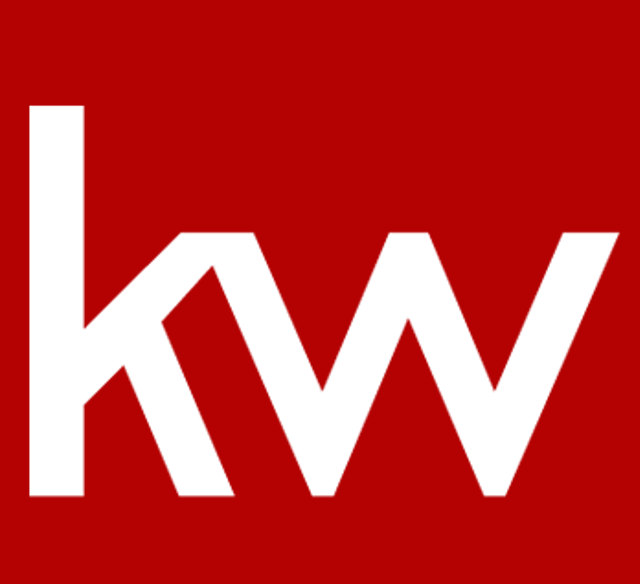Today’s mortgage and refinance rates
Average mortgage rates edged modestly higher yesterday, setting another 14-year high. So far this week, we’ve seen three modest rises, one big one and no falls.
By approaching 10 a.m. (ET), markets were signaling that mortgage rates today could fall. That would make a welcome change. But, as always, things might change as the hours pass.
Find your lowest rate. Start here (Sep 16th, 2022)
Current mortgage and refinance rates
| Program | Mortgage Rate | APR* | Change |
|---|---|---|---|
| Conventional 30 year fixed | 6.311% | 6.34% | +0.05% |
| Conventional 15 year fixed | 5.612% | 5.651% | +0.1% |
| Conventional 20 year fixed | 6.445% | 6.503% | +0.03% |
| Conventional 10 year fixed | 5.552% | 5.669% | +0.02% |
| 30 year fixed FHA | 6.392% | 7.264% | +0.09% |
| 15 year fixed FHA | 6.053% | 6.616% | +0.08% |
| 30 year fixed VA | 6.013% | 6.24% | +0.3% |
| 15 year fixed VA | 6.125% | 6.483% | Unchanged |
Should you lock a mortgage rate today?
Don’t lock on a day when mortgage rates look set to fall. My recommendations (below) are intended to give longer-term suggestions about the overall direction of those rates. So, they don’t change daily to reflect fleeting sentiments in volatile markets.
Although there are bound to be plenty of rises and falls over the next three months, I suspect the overall direction of travel will be gently upward.
So, my personal rate lock recommendations remain:
- LOCK if closing in 7 days
- LOCK if closing in 15 days
- LOCK if closing in 30 days
- LOCK if closing in 45 days
- LOCK if closing in 60 days
Market data affecting today’s mortgage rates
Here’s a snapshot of the state of play this morning at about 9:50 a.m. (ET). The data, compared with roughly the same time yesterday, were:
- The yield on 10-year Treasury notes nudged up to 3.48% from 3.45%. (Bad for mortgage rates.) More than any other market, mortgage rates normally tend to follow these particular Treasury bond yields
- Major stock indexes were falling soon after opening. (Sometimes good for mortgage rates.) When investors are buying shares, they’re often selling bonds, which pushes prices of those down and increases yields and mortgage rates. The opposite may happen when indexes are lower. But this is an imperfect relationship
- Oil prices decreased to $85.30 from $85.77 a barrel. (Good for mortgage rates*.) Energy prices play a prominent role in creating inflation and also point to future economic activity
- Gold prices dropped to $1,666 from $1,691 an ounce. (Bad for mortgage rates*.) It is generally better for rates when gold rises and worse when gold falls. Gold tends to rise when investors worry about the economy. And worried investors tend to push rates lower
- CNN Business Fear & Greed index — tumbled to 34 from 41 out of 100. (Good for mortgage rates.) “Greedy” investors push bond prices down (and interest rates up) as they leave the bond market and move into stocks, while “fearful” investors do the opposite. So lower readings are better than higher ones
*A movement of less than $20 on gold prices or 40 cents on oil ones is a change of 1% or less. So we only count meaningful differences as good or bad for mortgage rates.
Caveats about markets and rates
Before the pandemic and the Federal Reserve’s interventions in the mortgage market, you could look at the above figures and make a pretty good guess about what would happen to mortgage rates that day. But that’s no longer the case. We still make daily calls. And are usually right. But our record for accuracy won’t achieve its former high levels until things settle down.
So use markets only as a rough guide. Because they have to be exceptionally strong or weak to rely on them. But, with that caveat, mortgage rates today look likely to fall. However, be aware that “intraday swings” (when rates change direction during the day) are a common feature right now.
Find your lowest rate. Start here (Sep 16th, 2022)
Important notes on today’s mortgage rates
Here are some things you need to know:
- Typically, mortgage rates go up when the economy’s doing well and down when it’s in trouble. But there are exceptions. Read ‘How mortgage rates are determined and why you should care
- Only “top-tier” borrowers (with stellar credit scores, big down payments, and very healthy finances) get the ultralow mortgage rates you’ll see advertised
- Lenders vary. Yours may or may not follow the crowd when it comes to daily rate movements — though they all usually follow the broader trend over time
- When daily rate changes are small, some lenders will adjust closing costs and leave their rate cards the same
- Refinance rates are typically close to those for purchases.
A lot is going on at the moment. And nobody can claim to know with certainty what will happen to mortgage rates in the coming hours, days, weeks or months.
Are mortgage and refinance rates rising or falling?
Regular readers will have been surprised by countless headlines yesterday. Take one in The Wall Street Journal (paywall) as an example: “Mortgage Rates Top 6% for the First Time Since the 2008 Financial Crisis.” That message was repeated in similar forms by endless news outlets.
But hang on! Haven’t average mortgage rates (meaning those for conventional, 30-year, fixed-rate mortgages) been above 6% for all but two days this month? And weren’t they over 6% for a while in June?
Well, yes. But all those headlines were generated by Freddie Mac’s latest weekly rates report. And that’s flawed in a couple of ways.
Most relevantly, it assumes that you’re going to buy discount points on closing that earn you a lower rate. Right now, that’s often a very smart move because there are real bargains out there.
But not everyone can afford them. And assuming that everyone purchases points skew the rates Freddie publishes, making them lower.
We think you deserve a clearer picture. So, we publish raw average rates that don’t make assumptions about whether you’re able and willing to buy discount points.
If you’re one of the lucky ones who can and do purchase points, you’ll get a nice surprise when you receive your quotes. If you’re not, you won’t get a nasty shock.
Today
After an exhausting week for economic reports, today’s relatively quiet. It brings two reports from the University of Michigan: the consumer sentiment index and the 5-year consumer inflation expectations report.
Normally, those rarely move mortgage rates. But, in today’s febrile markets, they just might — though probably only modestly unless they’re truly shocking. Higher-than-expected figures for either might push up those rates while lower ones might drag them down.
Further ahead
Next week’s economic reports are mostly about real estate. But next Wednesday will almost inevitably see Federal Reserve Chair Jerome Powell unveil another rate hike.
CME FedWatch puts the chances of a third consecutive 75-basis-point (0.75%) rise at 74%. But it reckons there’s a 26% chance of a huge 100-basis-point (1%) hike. In the event of the latter being announced, expect sharply higher mortgage rates.
Why do I keep mentioning basis points? Because it clears up possible confusion. A 1% rise might mean an increase of y x 1%, or it might mean y + 1%. Suppose you’re looking at a 3% rate. That 3% x 1% is a 0.03% hike to 3.03%. But 3% + 1% = 4%, a much bigger jump. By mentioning basis points I’m clarifying that I’m talking about the latter.
Recent trends
Over much of 2020, the overall trend for mortgage rates was clearly downward. And a new, weekly all-time low was set on 16 occasions that year, according to Freddie Mac.
The most recent weekly record low occurred on Jan. 7, 2021, when it stood at 2.65% for 30-year fixed-rate mortgages.
Freddie’s Sep. 15 report put that same weekly average for conventional, 30-year, fixed-rate mortgages at 6.02% (with 0.8 fees and points), up from the previous week’s 5.89%. Little of that Tuesday’s big rise is likely to be reflected in Freddie’s latest report.
Note that Freddie expects you to buy discount points (“with 0.8 fees and points”) on closing which earns you a lower rate. If you don’t do that, your rate would be closer to the ones we and others quote.
Expert mortgage rate forecasts
Looking further ahead, Fannie Mae, Freddie Mac, and the Mortgage Bankers Association (MBA) each have a team of economists dedicated to monitoring and forecasting what will happen to the economy, the housing sector and mortgage rates.
And here are their current rate forecasts for the remaining two quarters of 2022 (Q3/22, Q4/22) and the first two quarters of next year (Q1/23, Q2/23).
The numbers in the table below are for 30-year, fixed-rate mortgages. Fannie’s forecast appeared on Aug. 22 and the MBA’s on Aug. 23. Freddie’s came out around Jul. 21. But it now releases forecasts only quarterly. So, expect its figures to look stale soon.
| Forecaster | Q3/22 | Q4/22 | Q1/23 | Q2/23 |
| Fannie Mae | 5.1% | 4.8% | 4.7% | 4.5% |
| Freddie Mac | 5.5% | 5.4% | 5.2% | 5.2% |
| MBA | 5.3% | 5.2% | 5.1% | 5.0% |
Of course, given so many unknowables, the whole current crop of forecasts might be even more speculative than usual. And their past record for accuracy hasn’t been wildly impressive. Personally, I think they’re too optimistic.
Find your lowest rate today
You should comparison shop widely, no matter what sort of mortgage you want. As a federal regulator the Consumer Financial Protection Bureau says:
“Shopping around for your mortgage has the potential to lead to real savings. It may not sound like much, but saving even a quarter of a point in interest on your mortgage saves you thousands of dollars over the life of your loan.”
Mortgage rate methodology
We arrive at an average rate and APR for each loan type to display in our chart. Because we average an array of rates, it gives you a better idea of what you might find in the marketplace. Furthermore, we average rates for the same loan types. For example, FHA fixed with FHA fixed. The end result is a good snapshot of daily rates and how they change over time.



